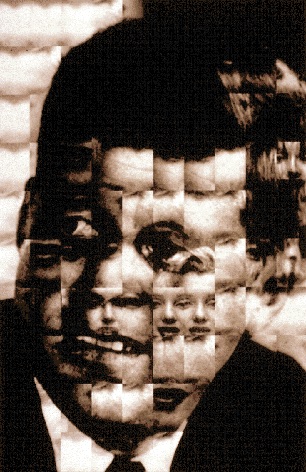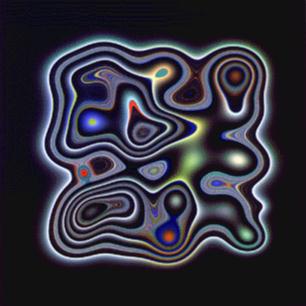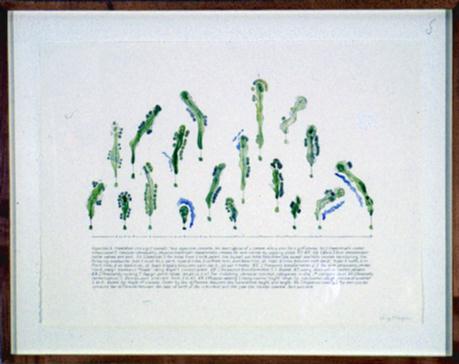PARC Algorithmic Art Show (1994)
(from http://www.parc.xerox.com/csl/members/bern/algoart.html)

Algorithmic Art
Algorithmic art is rule-based art, usually made with the aid of a computer. Algorithmic visual art sits somewhere between mathematical art and computer graphics. Mathematical artists usually show individual timeless objects, such as topological models, whereas algorithmic artists focus on process, the sequence of steps used to create the work. Computer artists usually use standard algorithms (for example, those available in Photoshop), whereas algorithmic artists invent new algorithms and leave them quite visible. Computer artists typically cede less, or at least later, control to automatic processes than do algorithmic artists.
Xerox PARC hosted an algorithmic art show in 1994 with about 20 artists from four different countries. Computer scientist Donald Knuth showed pictures of Leaper graphs, generalizations of a knight’s tour. Adam Finkelstein and Sandy Farrier created JFK-MM, shown above, with a computer program that found “optimal” placements of Marilyn Monroe pixels within an image of John F. Kennedy. Anna Campbell Bliss showed Jumping Koi at Lake Truchet, a nice blend of algorithmic and “manual” art in which a random Truchet tiling (squares with two quarter-circles apiece) represents a lake. Yoshiyuki Abe showed LS-51, which was made by ray-tracing a scene with many light sources and then separately remaindering R, G, and B values by a modulus.

The PARC jury (Marshall Bern, Paul DeMarinis, Andrew Glassner, Rich Gold, and Natalie Jeremijenko) tried to avoid fractals — too cliche! — but we found Daryl Hepting’s dragons and Eleanor Kent’s fractal knit baby blankets irresistible. Similarly, we accepted a number of Stewart McSherry’s ray-traced pictures, even though we thought his work fit the category of computer graphics more closely than algorithmic art.
Finally, we included some art about algorithms, rather than made by algorithms. George Legrady’s Equivalents II converted keywords into clouds. Kerny McLaughlin’s Portrait of TKM gave a well-defined algorithm for turning a person into a golf course. The illustration shows the result of running the algorithm on the artist’s father, and the calligraphed text below gives pseudocode. Portrait of TKM quietly exploded our preconceptions of “algorithmic art”.
